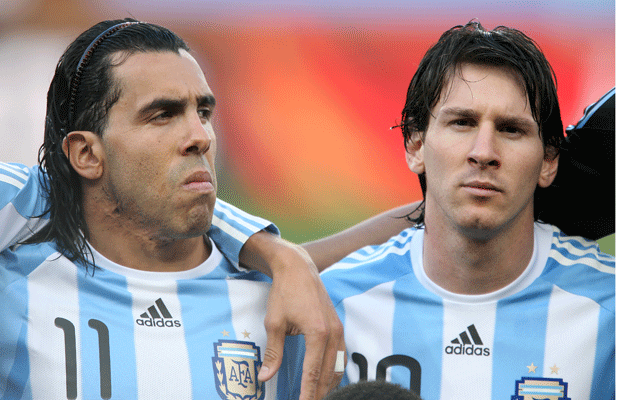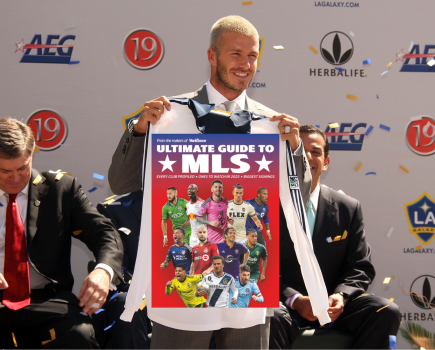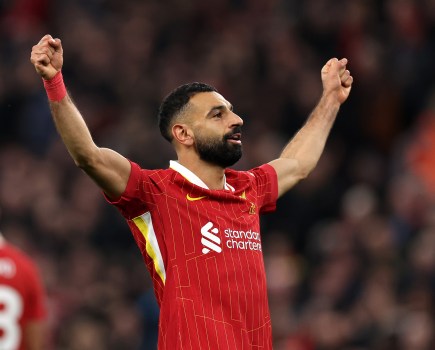It’s one of the quirks of international football that countries sometimes have two hugely gifted players whose styles are incompatible. How England must have wished when Stanley Matthews and Tom Finney were in their prime that one of them had been left-footed. How Italy must have wished that either Gianni Rivera or Sandro Mazzola had been born 10 years earlier. Why did Steven Gerrard and Frank Lampard have to be contemporaries?
New Argentina coach Gerardo Martino, similarly, would surely swap Carlos Tevez for a left-back of similar quality.
For at least five years, Argentinian football has been wracked by the issue of what to do with Tevez.
Since Lionel Messi began operating as a false nine at Barcelona, he has been unable or unwilling to go back to the flank where he began his professional career, even when ostensibly deployed there. This is a return to how he used to be. His youth coaches speak of how they would play Messi on the wing and find him constantly moving to play where a classic number 10 would – even if most Argentinians insist his style is too dynamic for him to be considered a classic enganche (hook) in the style of Juan Roman Riquelme.
That has proved problematic for the likes of Samuel Eto’o, Zlatan Ibrahimovic and Thierry Henry at Barcelona, all of whom found themselves having to significantly modify their games in order to accommodate Messi.
At the World Cup in 2010, Diego Maradona deployed Messi behind Gonzalo Higuain and Tevez, but even then they often ended up trying to operate in the same space, with Tevez dropping back as Messi pushed forwards, or dropping so deep that his creative threat was diminished. Perhaps at club level they could have found an understanding – as Cristiano Ronaldo, Tevez and Wayne Rooney did, thrillingly, at Manchester United – but in the limited time available to international sides it was impossible.
By 2011, at the Copa America, Sergio Batista was using a 4-3-1-2, with Messi in that enganche position behind Tevez and Ezequiel Lavezzi. After two games, stilted draws against Bolivia and Colombia, he switched to a 4-2-3-1, with Messi on the right and no Tevez – until he came off the bench in the quarter-final against Uruguay. It resulted in an improved performance in a win over a weakened Costa Rica – for what that was worth – and much grumbling given Tevez’s position as “el jugador del pueblo”.
That quarter-final made clear just how pronounced Messi’s inward drift from the right was. After Uruguay’s Diego Perez had been sent off before half-time, their coach, Oscar Tabarez, played without a left-sided midfielder, confident that Messi would come off the flank into the crowded centre anyway.
That game marked something of a sea change in Argentina’s reaction to Tevez. He had only been recalled to Batista’s squad before the tournament because of public pressure, but his petulance after coming off the bench – and his missed penalty in the shoot-out – seemed to lead to an acceptance that perhaps he was a problem rather than the solution.
When Tevez was then banned by Manchester City after his refusal to warm up during the Champions League game away to Bayern Munich, Argentina coach Alejandro Sabella was given the perfect excuse to leave him out – something he continued to do for three years. Deeming him a disruptive presence when not a first choice, he didn’t even include him in squads.
The problem came at the World Cup in Brazil, when Argentina’s array of forwards began going down with injury. First Higuain, then Sergio Aguero and then Angel Di Maria. It was only natural to look at the bench and wish it was Tevez sitting there rather than Rodrigo Palacio.
Realistically, Martino had little choice but to bring Tevez back. His first friendly brought a Di Maria-inspired 4-2 win away to Germany. His second was a stroll against Hong Kong. For the third, having taken time to assess his options, waiting so that the decision wouldn’t look like a criticism of Sabella, he recalled Tevez.
Significantly, he didn’t start the Juventus forward against Croatia at Upton Park. Aguero was used through the middle – where he is surely more effective than on the left, the position he has often adopted when Higuain has played – with Messi on one flank and Di Maria on the other.
As though determined not to fall into the trap so many of his predecessors have of trying to squeeze too many of Argentina’s crop of hugely talented forwards into the side, Martinez has so far opted for a fairly strict 4-3-3, with Javier Mascherano flanked by two of Enzo Perez, Lucas Biglia and Ever Banega.
The effect is, therefore, seven largely defensive players plus a fluid and mobile front three, the two linked by Di Maria shuttling back and the forward surges of Pablo Zabaleta and the two “carrilleros” either side of Mascherano.
What was telling against an admittedly weak Croatia was that Messi did largely stick to the right flank. His touch map showed around two-thirds of his touches in the right-third of the pitch, and another third in the centre. He wasn’t constantly drifting infield, although he did so at times. The issue, really, is one of balance. The major part of the threat Messi presents comes in those central areas; it’s just that if he always goes there he can unbalance the team.
The discipline seemed better against Croatia, though, and brought a 2-1 win. Tevez appeared for only
the final 28 minutes, replacing Aguero, but there were signs that perhaps an understanding could be forged. It’s one thing to do it in the final minutes of a friendly, of course, quite another to do it from the start in a competitive game, but the likelihood now must be that Tevez is included in the squad for next summer’s Copa America.
For years, Argentina have made their glut of good forwards a negative. With a little sacrifice all round, it could become the strength it ought to be.
By Jonathan Wilson
*This article originally appeared in the December 2015 issue of Wold Soccer.







